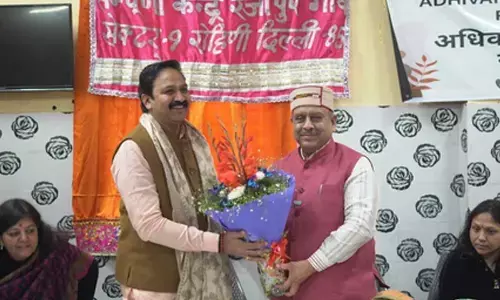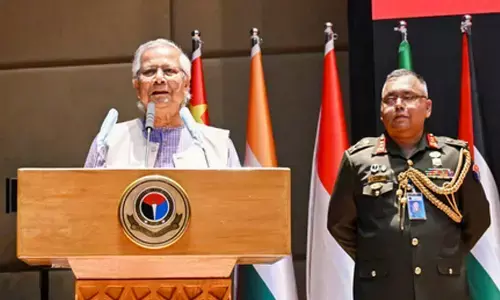PM-KUSUM scheme needs recalibration

The Pradhan Mantri Kissan Urja Evam Utthaan Mahabhiyaan (PM KUSUM scheme), introduced in 2019, has a commendable objective: that of solarising agriculture in India
New Delhi: The Pradhan Mantri Kissan Urja Evam Utthaan Mahabhiyaan (PM KUSUM scheme), introduced in 2019, has a commendable objective: that of solarising agriculture in India. But in the six years since its inception, the scheme has achieved only about 30 per cent of its targets. With its deadline year – 2026 – approaching fast, will it be able to cover the remaining ground?
A new report by Centre for Science and Environment (CSE), which focuses on gathering data and information especially from the perspective of farmers on on-ground implementation of the scheme, has offered a roadmap to help PM-KUSUM strike its targets. The report, titled Implementation Challenges of the PM KUSUM Scheme: Case Studies from Selected Indian States, was released here today at a webinar organised by CSE.
According to Nivit Kumar Yadav, programme director, industrial pollution and renewable energy, CSE, the scheme is divided into three components, focusing on (A) installation of mini grids on barren lands, (B) installation of off-grid solar water pumps to replace diesel water pumps, and (C) installation of on-grid solar water pumps to replace electric water pumps and installation of mini-grids for agriculture feeder solarization. Most of the implementation has taken place under component B, with Haryana, Rajasthan, Maharashtra and Uttar Pradesh are among the top performing states. Components A and C have seen minimal implementation.
A beneficiary of the PM-KUSUM scheme from Aterna village in Sonipat district of Haryana, who says: “The solar water pump has eased farming activities. We used to get agricultural electricity supply on the basis of a time table set by the state implementing agencies, who would also set the timings during night hours in some weeks. Irrigation of land at night is inconvenient for us farmers. The addition of a solar water pump on our land has meant that we now have the freedom to irrigate our lands during the day without the threat of power cuts.” Farmers who have moved from diesel or electric pumps to solar-powered pumps have found it profitable, but only if the pumps they have installed are of the correct size – farmers in Haryana, says the report, are saving up to Rs 55,000 per year after shifting from diesel water pumps to solar variants.
One of the principal challenges that the scheme has faced in its implementation has been the availability of cheap electricity for farmers. However, this cheap electricity has its flip side – it leads to increases in a state’s subsidy burden. This access to cheap electricity leads to a lack of incentive for farmers to shift from electric water pumps to solar water pumps.
Farmers are often forced to opt for pump sizes that are bigger than needed for their land. According to Dr Debajit Palit, professor of energy at the NTPC School of Business in Noida and a panelist at the CSE webinar, the scheme needs to be tailored as per farmers’ requirements so that it proves financially viable for them. Said Dr Palit: “If pump sizes are based on the land size and water requirements of different areas, rather than keeping them uniform throughout the country, farmers could avoid the extra expenditure.”
Another challenge is the centralisation of the implementation model in some states. In Punjab, the report notes,the scheme’s implementation is overseen by the Punjab Renewable Energy Development Agency, as opposed to Rajasthan, where each component of the scheme has a different implementing agency. Yadav says that to truly realise the potential of the PM-KUSUM scheme, a decentralised model is important. “State implementing agencies with the necessary knowledge about each component should be responsible for the components that are under their expertise.”
The report has recommended the following measures to accelerate the implementation of the PM KUSUM scheme in the coming years:
Decentralisation: Adecentralised implementation model is needed. Implementing agencies with on-ground knowledge of farmer demographics and needs are able to cater to farmers’ needs more effectively.
Financial viability: Farmers should get the option to pay upfront costs in installments in order to make the scheme financially more viable for them. Increase in Central financial assistance: This assistance could be hiked, subject to different states’ needs or prices of solar modules. Prices of modules after Covid-19 increased, leading to a rise in upfront costs to be paid by farmers as well.


















